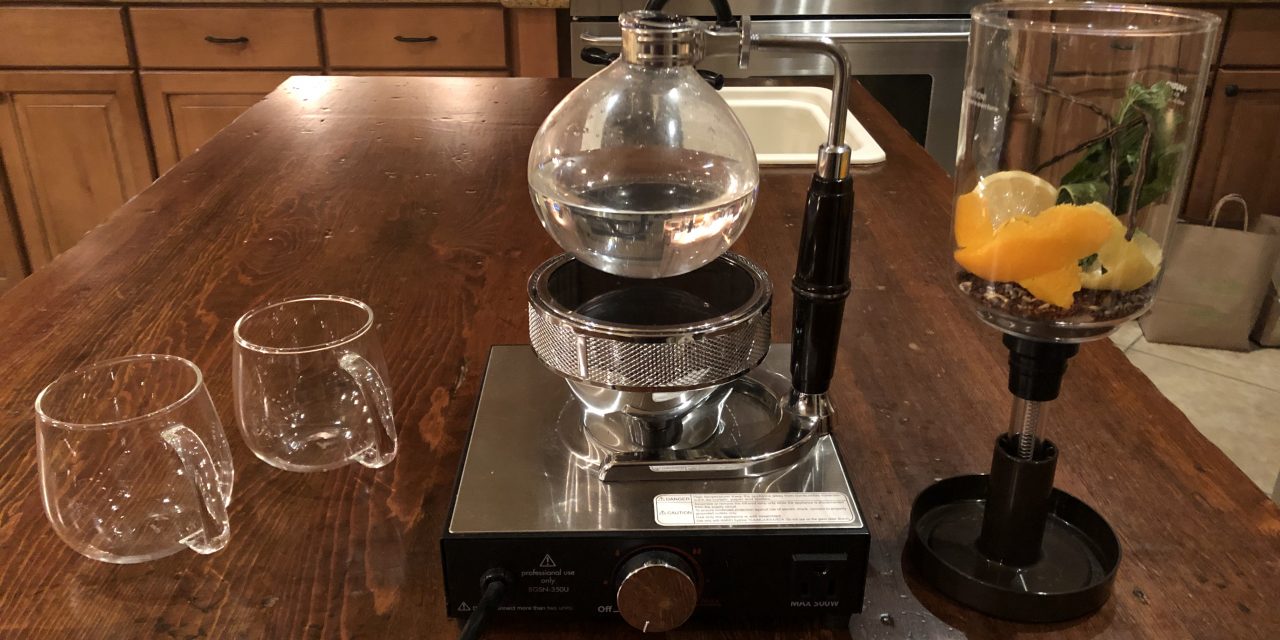Before even finishing the book, I flipped through seeking a recipe I felt I could execute with the what I (mostly) had on hand. I underestimated the challenge.
I was initially drawn to the vacpot recipes because, (A) the photos look great, and (B) I already own a vacpot. What’s a vacpot? Glad you asked. It’s a coffee maker. Also known as a syphon coffee maker or a vacuum coffee brewer. It excels at creating a delicate, nuanced cup of black coffee (presuming you start with a high quality—my preference is single origin, recently roasted, freshly ground bean). The water starts out in the bottom bulb-shaped chamber, then after being heated from an alcohol burner or halogen beam heater the vapor pressure increases such that the water is forced into the upper chamber. Once the water reaches the upper chamber, which is separated from the bottom by a metal or cloth screen filter, you add the coffee, stir, and wait about a minute before turning off the heat. The vapor pressure declines, leaving a vacuum in its place, and the water is the sucked back into the bottom chamber, leaving the coffee behind in the upper chamber. It’s a wonderful gadget to have around if you, like me, enjoy perfect coffee and have a penchant for elaborate preparation methods.
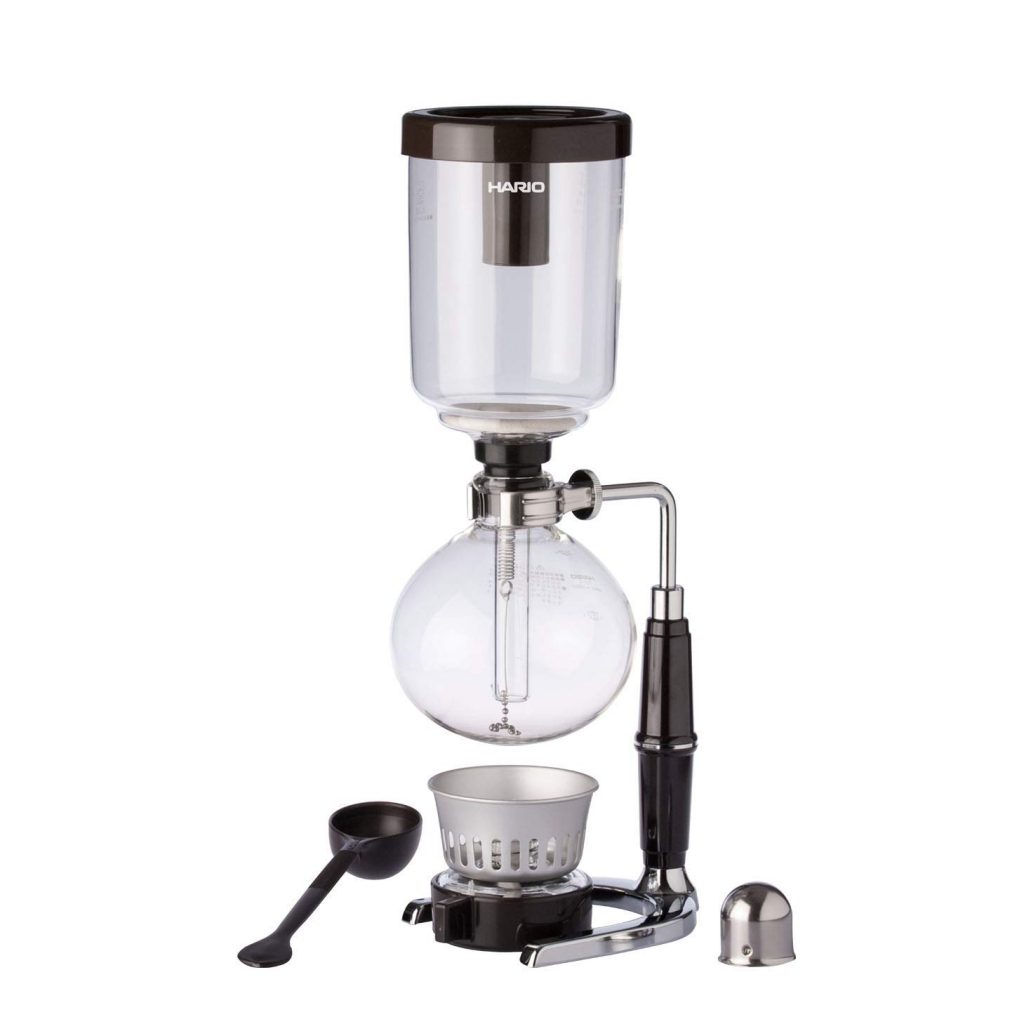
Understandably, I was excited to find another use for my vacpot! I took a look at the ingredients, which include Martin Miller’s Gin, Luxardo Maraschino Liqueur, citric acid, simple syrup, almonds, Rare Tea Cellar Fields of France Rooibos, green cardamom pods, dry lavender flowers, saffron threads, a cinnamon stick, a vanilla bean, Thai long peppercorns, lemon, orange, mint, and lemon balm. No problem! I had everything except for the tea, the lemon balm, and the Thai long peppercorns. How hard could those be to find?
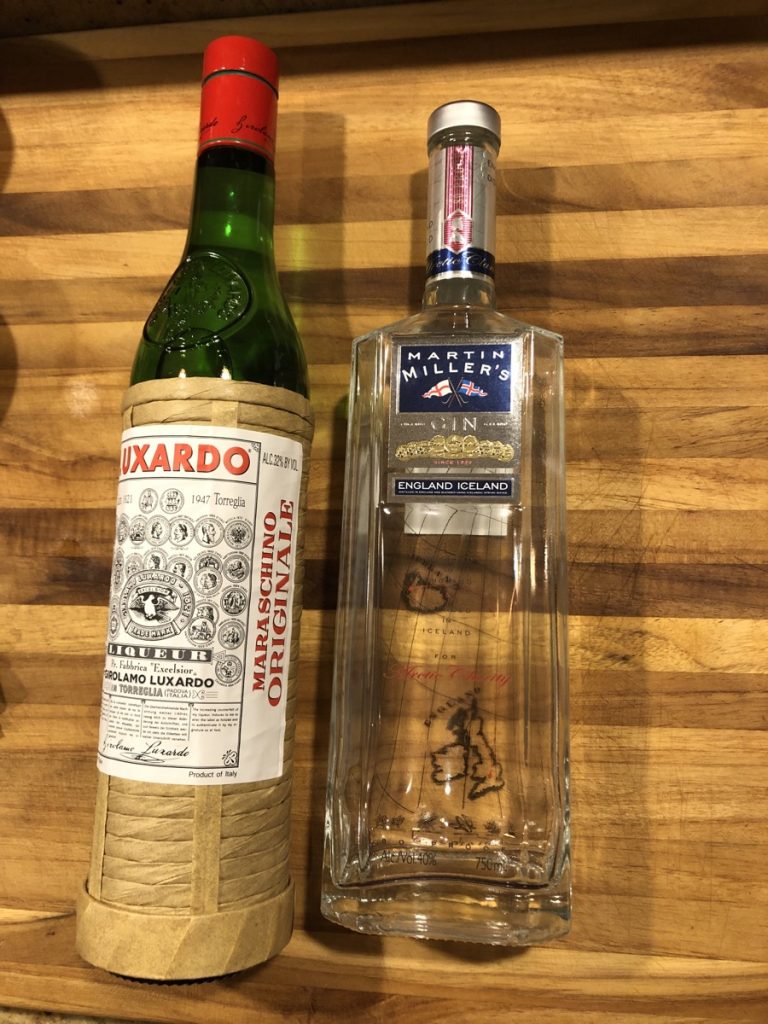
After a stop at a local tea shop, where I picked up some nice looking rooibos tea, I visited just every Asian food market in town. Guess how many had or had ever heard of Thai long peppercorns or lemon balm? None.
Anyway, I was committed to making this recipe, so I decided to improvise. I swapped out black peppercorns for the Thai long peppercorns, and just left out the lemon balm. Oh, and it turned out I only had black cardamom, not the requisite green cardamom. C’est la vie.
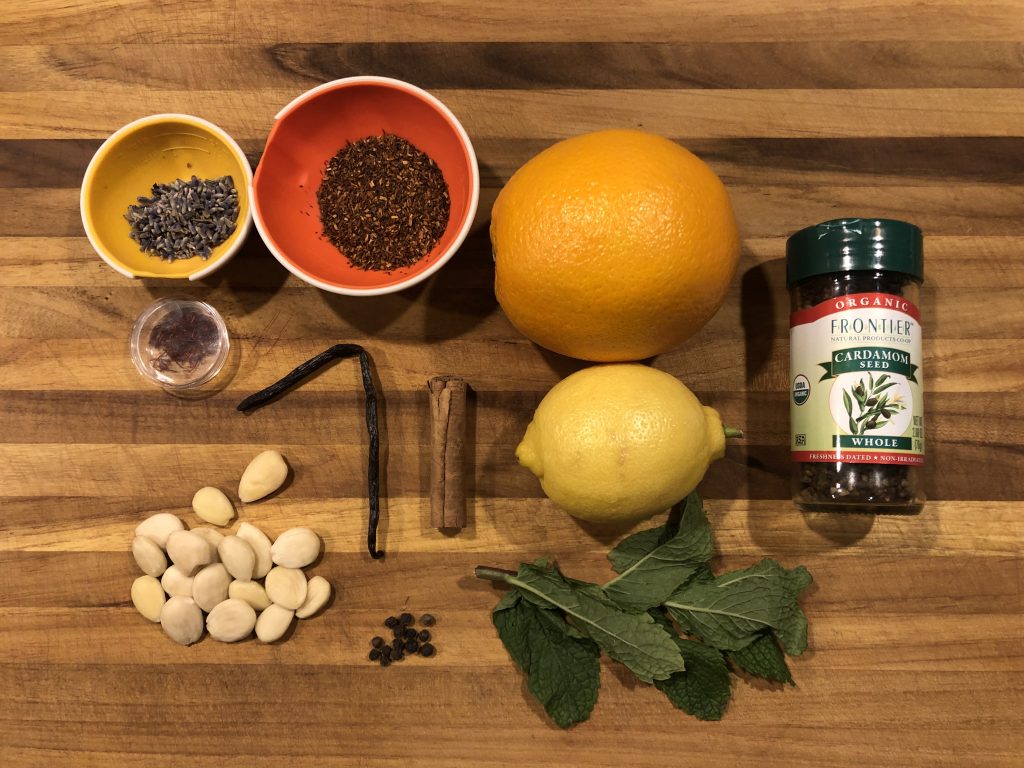
So I made the cocktail. It was pretty straightforward. I prepped all the ingredients. Added the dry ingredients to the upper chamber, and the liquid ingredients (150 grams – about half of the entire batch) to the bottom chamber. I switched on the beam heater and waited while the concoction was magically lifted into the upper chamber. The recipe calls for you to stir to “aid infusion.” Unfortunately, the 150 grams of liquid was only enough to partially cover the dry ingredients. Stirring was very difficult. It became more of a mashing, as I attempted to push all the ingredients down into the liquid. It was not a graceful thing. However, the liquid did successfully undergo an amazing transformation of color and flavor, and the resulting cocktail was warm and delicious as we enjoyed out by the fire.
The only problem: there wasn’t enough of it. The 150 grams was split between Jennifer and me, and it was scarcely more than a tease. Now I had a vacpot filled with wet, mashed ingredients, and not enough of certain ingredients (I used up my vanilla bean and saffron thread supply) to make a second batch. I did the only thing I could think of: made the second batch using the spent ingredients from the first batch. It was just as good, honestly.
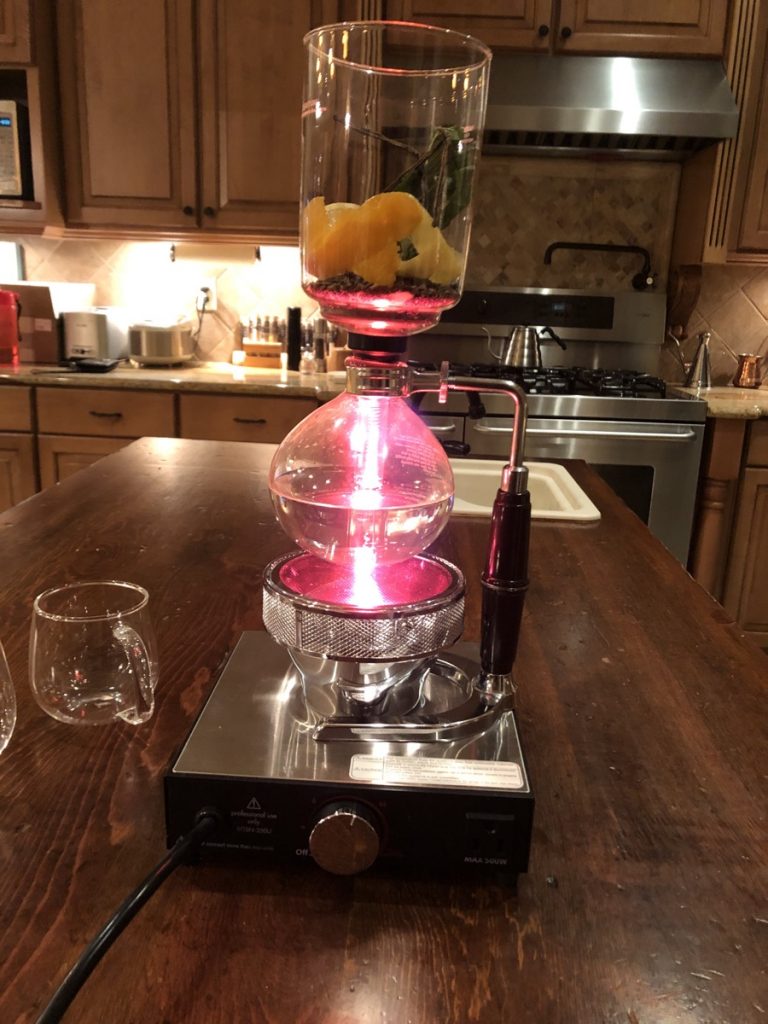
Brewing… 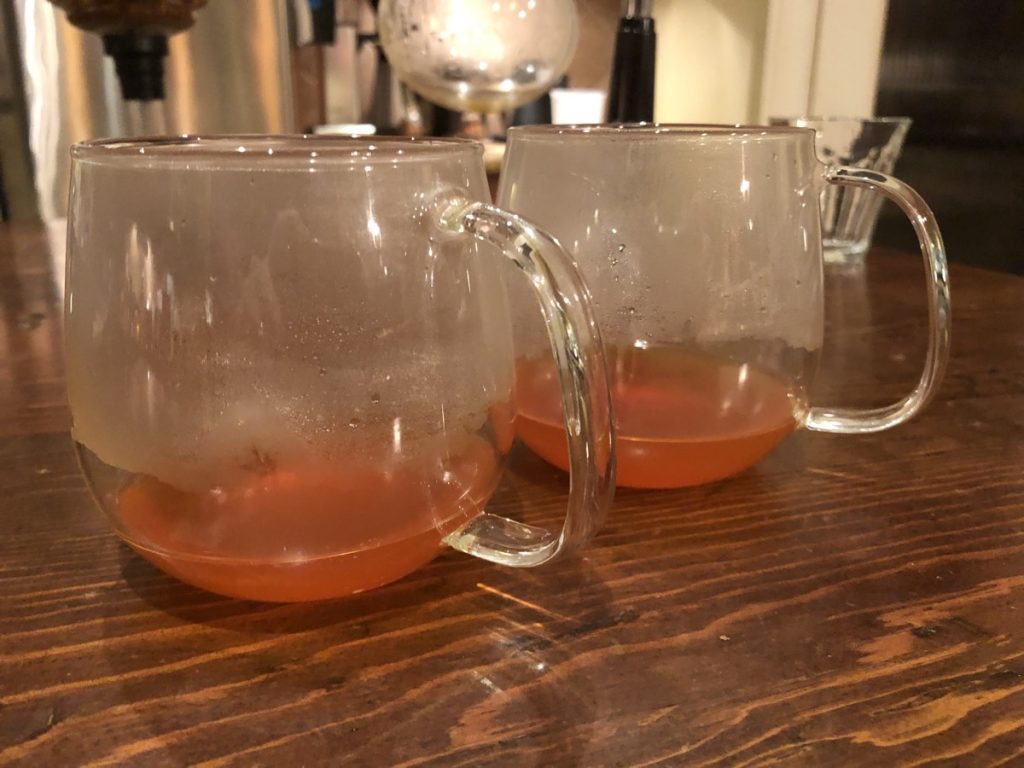
Very small portion…
So I got to thinking…why not make the entire batch all at once? If there’s enough flavor in the ingredients to make two separate batches, certainly it could make one larger batch. And, the bigger advantage would be that a larger batch would completely cover the dry ingredients and make stirring much more feasible.
Now the hunt was on for Thai long peppercorns, green cardamom and lemon balm. And, I figured, I may as well source the specific tea that was called for in the recipe. Good news, and a valuable find – Rare Tea Cellar offers a Master Tea Sampler that contains most of the teas I needed for this entire project. I went ahead and ordered that and have been enjoying tea most evenings.
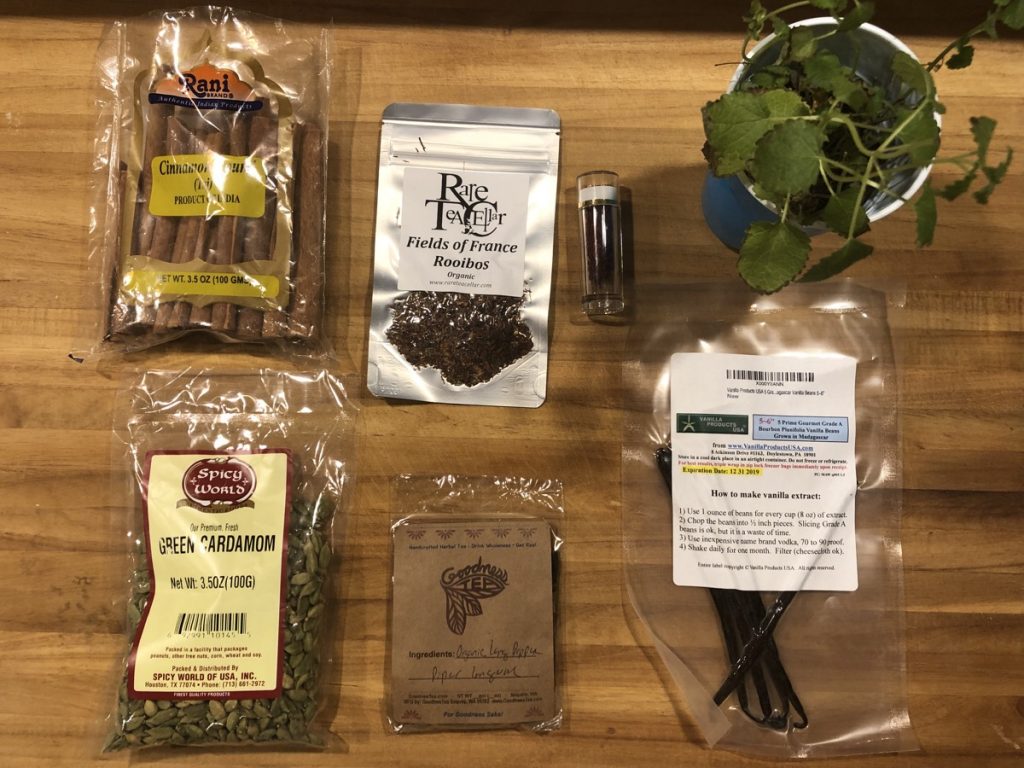
Thai long peppercorns and green cardamom were easy to find on amazon. I can tell you that black peppercorns are not even remotely a substitute for the Thai long peppers (piper longum). Their heat is more like the heat from a Sichuan peppercorn – it’s numbing. Sichuan food is often characterized as “ma la” – the “ma” is the tingling, numbing sensation from the Sichuan peppercorns, and the “la” is the burning heat from the chili peppers.
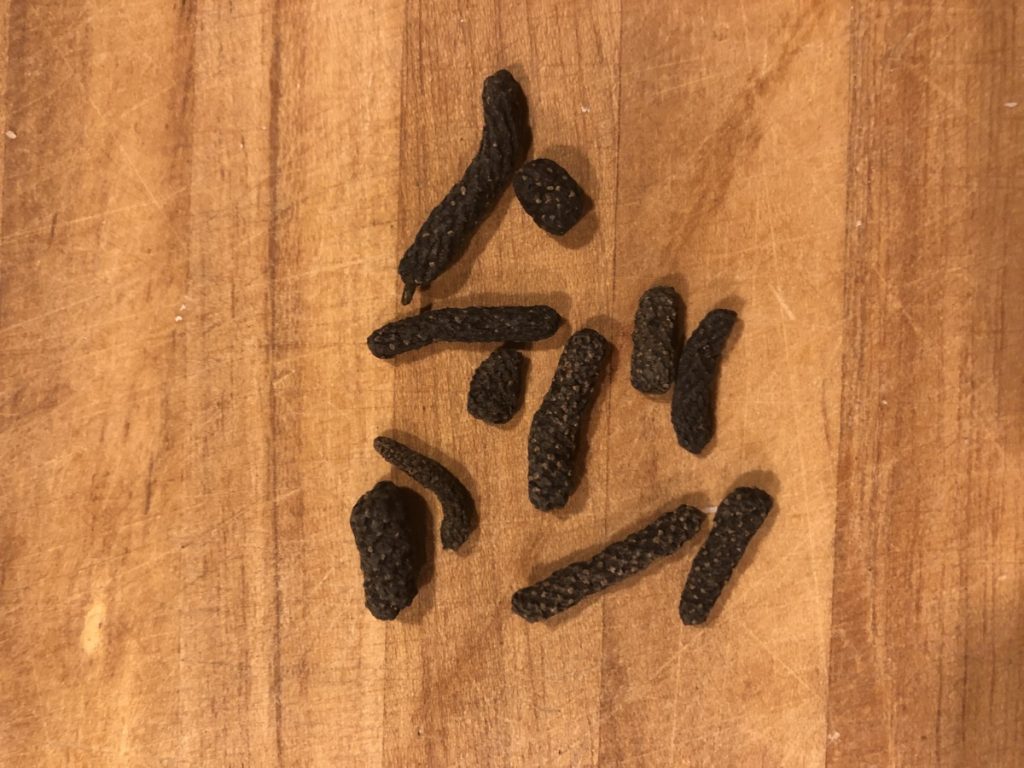
Lemon balm, on the other hand, is slightly more complicated. If you’re lucky, you may be able to find this herb locally, but I had no such luck. You can grow it yourself, which I was not patient enough to do, or you can order live plants from Etsy. Surprisingly, the little plants ship decently well, wrapped in newspaper. But they’re very small, and I had to wait a week or so for the plant to develop some new growth so I had enough to work with. I had never tasted fresh lemon balm before. It’s quite aromatic, and, as the name implies, has a citrusy note to it. Mint is not a suitable substitute.
So, take two. With all of the right ingredients I remade the cocktail. This time I “brewed” the entire batch at once, which did offer significant improvement. The dry ingredients were completely covered, it was easy to stir, and I the yield was two appropriately-sized servings.
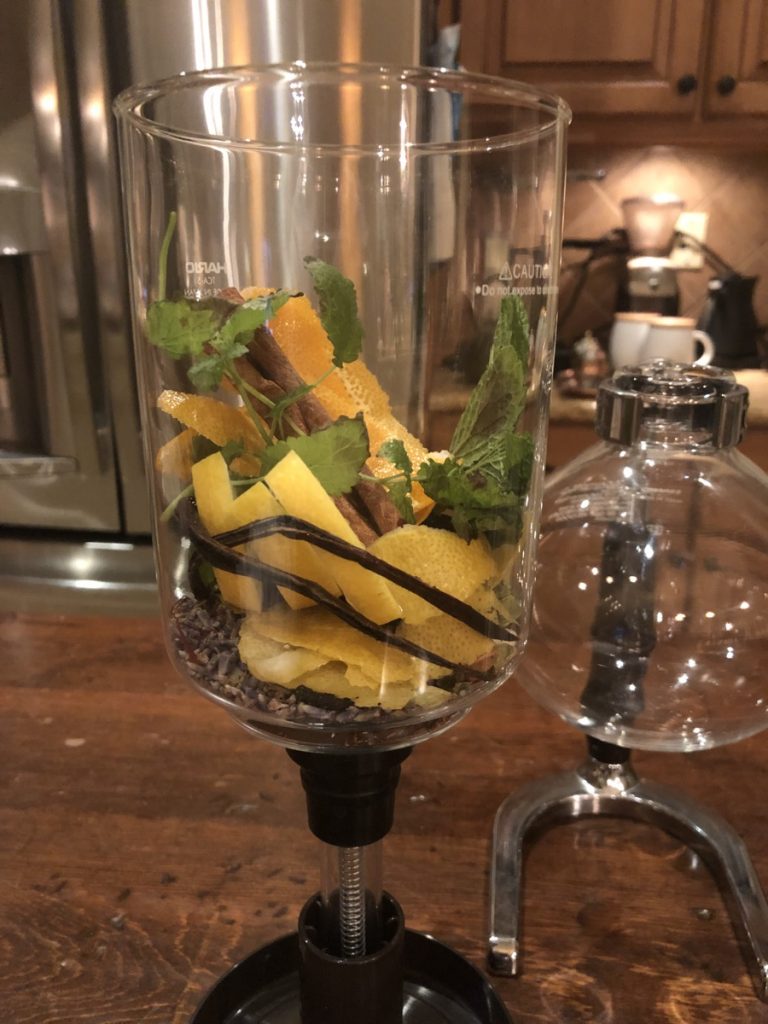
Brew #2 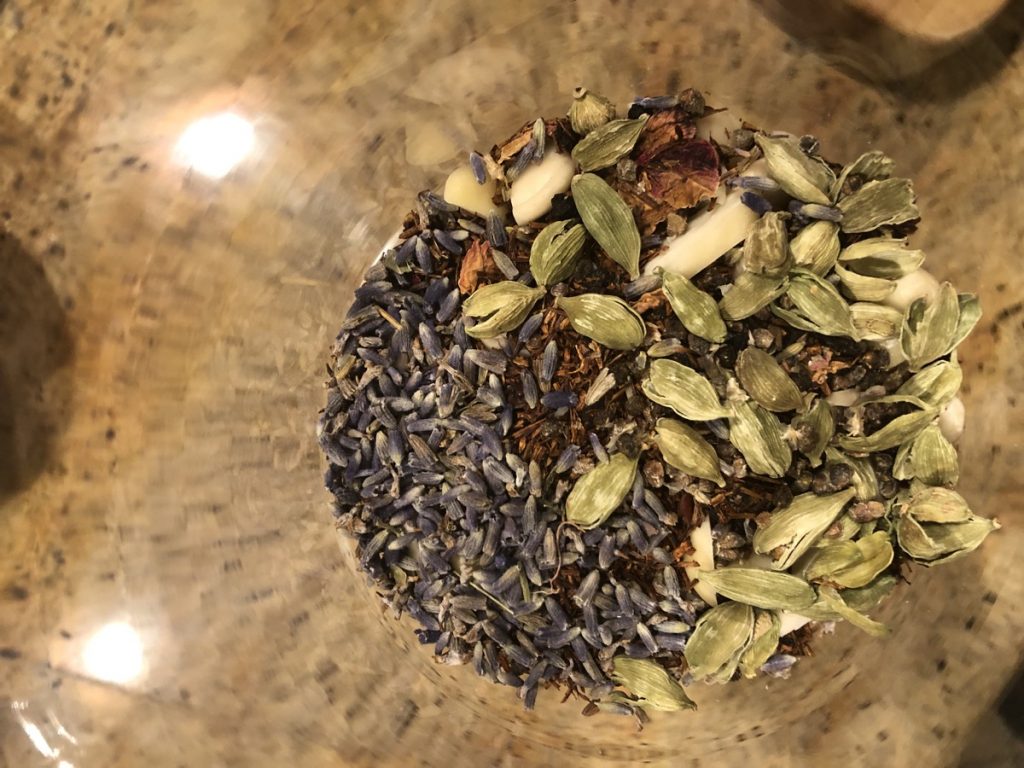
The “right” ingredients
Interestingly, I was unable to detect a significant difference in taste between my first attempt and my second attempt. Of course, I wasn’t able to taste them back-to-back, so I could be totally wrong. But I can tell you, both final products were quite delicious. So, the take away for me is this:
If you want to make this cocktail, but don’t have all the right ingredients, go for it anyway. You’ll still end up with a nice final product. On the other hand, if you want to be exposed to new ingredients, which is my goal, then go ahead and track down those Thai long peppers and lemon balm. Taste for yourself the difference between green and black cardamom. Your kitchen and your palate will be richer for your effort.

